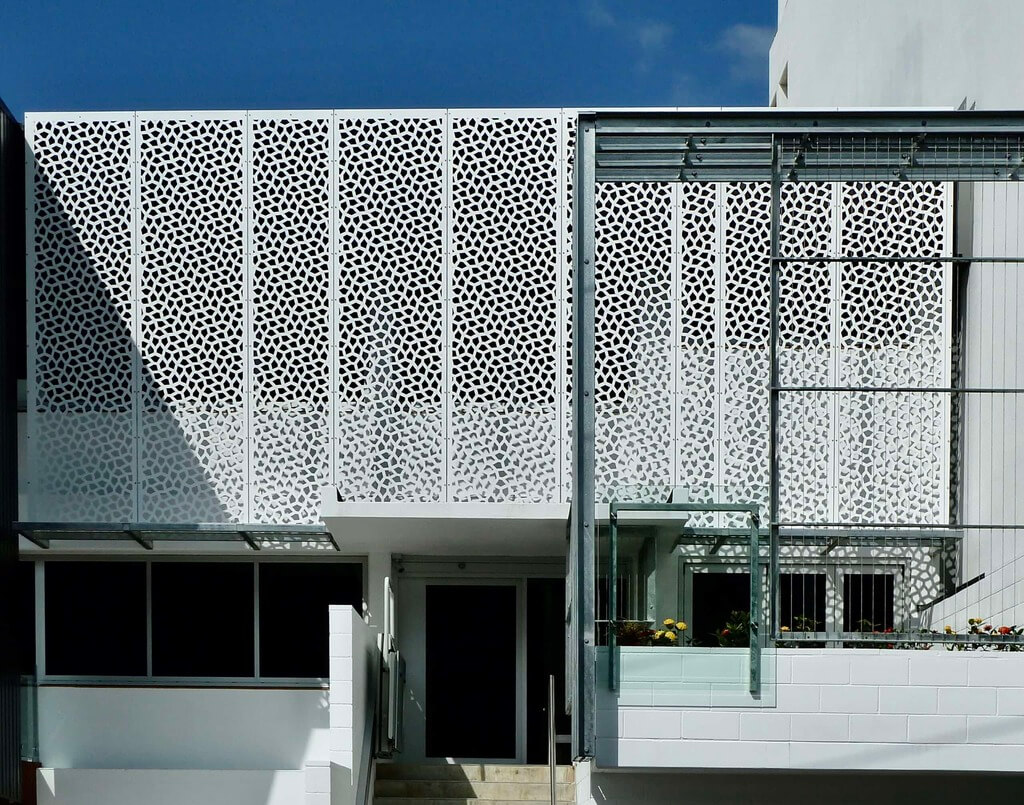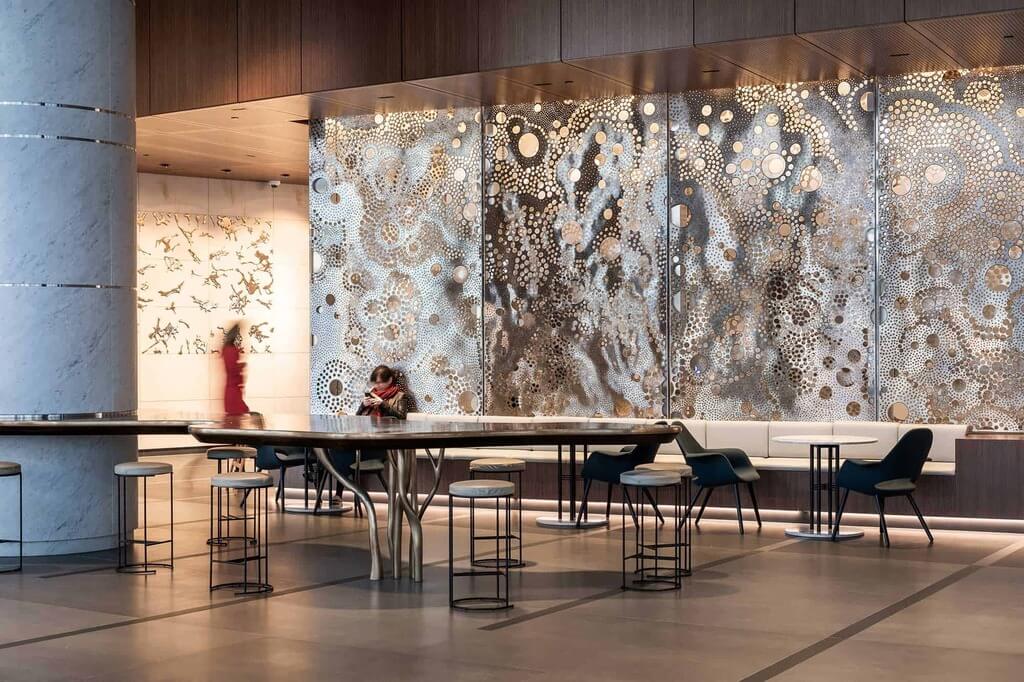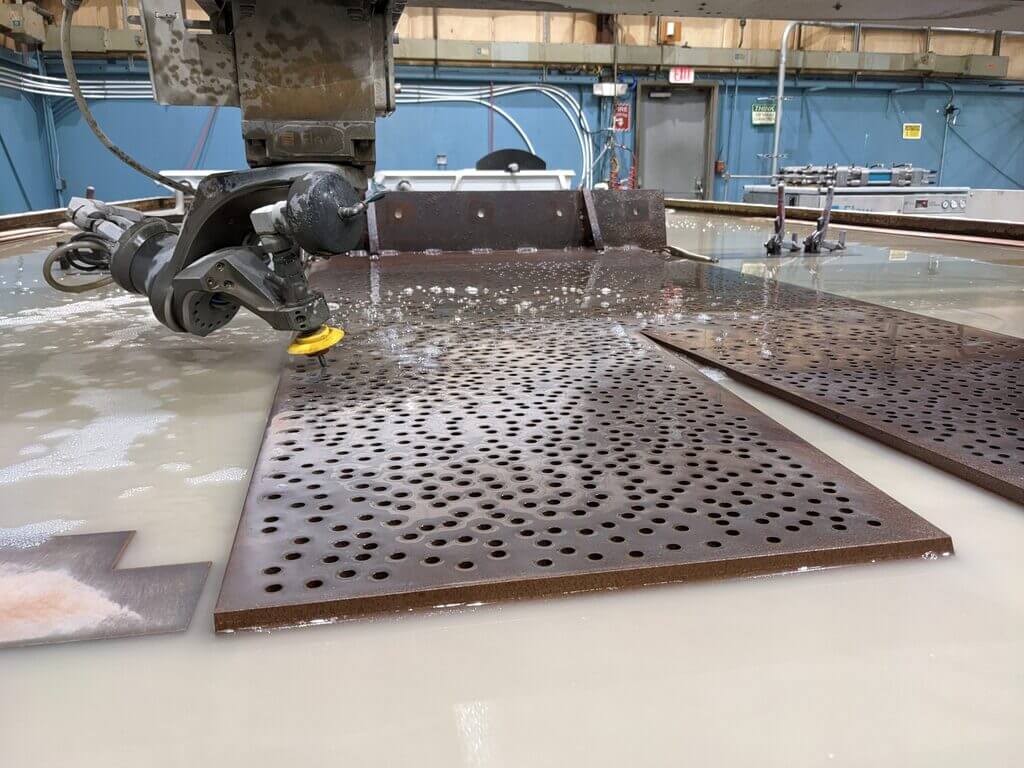Waterjet cutting is a versatile technology that has become increasingly popular in the world of architecture. This technology has the ability to cut through virtually any material, from metals to plastics, ceramics to glass, and even stone. It is a precise and efficient method of cutting, making it ideal for architectural projects where accuracy and detail are essential.
In this article, we will explore the advantages of waterjet cutting for architectural projects and discuss how this technology has revolutionized the field.
Advantages of Waterjet Cutting in Architectural Projects

Precision Cutting:
Waterjet cutting machine is highly accurate and precise, with a cutting tolerance of +/- 0.1 mm. This level of accuracy is essential in architectural projects, where even the slightest error can have significant consequences. Waterjet cutting ensures that every cut is precise, clean, and of high quality, allowing architects to easily achieve the desired results.
Versatility
Waterjet cutting can cut through virtually any material, from metal to stone, ceramics to glass. This versatility allows architects to explore different design options without being limited by the properties of the material. Whether you are designing a complex metal structure or a delicate glass sculpture, waterjet cutting can help you achieve your vision.
Reduced Waste
Traditional cutting methods, such as sawing or grinding, can result in significant material waste. Waterjet cutting, on the other hand, produces minimal waste, as it is a non-contact cutting method. This means the material being cut is not subjected to any heat, which can cause deformation or warping. As a result, waterjet cutting is a more sustainable and eco-friendly option.
Customization
Waterjet cutting allows architects to create highly customized designs with intricate patterns, shapes, and details. This technology can easily cut through materials, enabling architects to experiment with different shapes, sizes, and designs. Whether you are designing a building façade, a sculpture, or a decorative element, waterjet cutting can help you achieve your desired result.
Cost-Effective
Waterjet cutting is a cost-effective option for architectural projects, as it reduces material waste and eliminates the need for additional machining or finishing. This technology is also highly efficient, with cutting speeds of up to 600 inches per minute. This means architects can achieve their desired results quickly and efficiently without incurring additional costs.
Waterjet Cutting Process

Waterjet cutting uses a high-pressure stream of water, typically with added abrasive particles, to cut through the material. The water is pressurized to up to 60,000 psi and is forced through a small orifice, creating a fine stream. The abrasive particles are added to the stream, which helps to erode the material being cut.
The cutting process is controlled by a computer, which directs the waterjet to follow a specific path based on the design specifications. This ensures that the cuts are precise and accurate and that the material is cut to the desired shape and size.
Waterjet cutting can be used to cut a variety of materials, including metals, plastics, ceramics, glass, and stone. The cutting speed and pressure can be adjusted to suit the specific properties of the material, ensuring that the cuts are clean and accurate.
Waterjet Cutting Applications in Architecture

The use of water jet cutting in architecture has a wide range of applications. Here are some of the most common uses of waterjet cutting in architectural projects:
Building Façades
Waterjet cutting can be used to create intricate patterns and designs on building façades, adding a unique and decorative element to the building. The precision and accuracy of waterjet cutting ensure that the design is executed perfectly, and the durability of the materials used ensures that the façade remains intact for years to come.
Interior Design Elements
Waterjet cutting can be used to create a variety of interior design elements, such as wall panels, room dividers, and decorative screens. These elements can be customized to fit the design specifications of the space and can add a unique and modern touch to any interior design project.
Sculptures and Art Installations
Waterjet cutting can be used to create intricate sculptures and art installations with precise cuts and intricate details. The versatility of the technology allows artists and designers to experiment with different materials and designs, and the precision of the cuts ensures that the final product is of high quality.
Signage and Branding
Waterjet cutting can be used to create custom signage and branding elements, such as logos and lettering. The accuracy of the cuts ensures that the final product is professional and polished, and the versatility of the technology allows designers to work with a variety of materials and sizes.
Custom Furniture
Waterjet cutting can be used to create custom furniture pieces, such as tables, chairs, and cabinets. The precision and accuracy of the cuts ensure that the furniture pieces are of high quality and fit perfectly in the space they were designed for.
Best Materials for Waterjet Cutting in Architectural Projects

Metals
Waterjet cutting is an ideal option for cutting metals, such as aluminum, steel, and copper. The precision and accuracy of the cuts ensure that the metal pieces are of high quality, and the versatility of the technology allows architects to experiment with different shapes and designs.
Glass
Cutting glass with a waterjet cutter can be used for intricate shapes and designs, making it an ideal option for creating decorative glass elements in architectural projects. The precision and accuracy of the cuts ensure that the glass pieces are of high quality and safe to use.
Stone
Waterjet cutting is an ideal option for cutting stones, such as marble, granite, and limestone. The precision and accuracy of the cuts ensure that the stone pieces are of high quality and fit perfectly in the space they were designed for.
Plastics
Waterjet cutting can be used to cut a variety of plastics, including acrylic and polycarbonate. The precision and accuracy of the cuts ensure that the plastic pieces are of high quality and safe to use.
Ceramics:
A waterjet cutter can be used to cut ceramics into intricate shapes and designs, making it an ideal option for creating decorative ceramic elements in architectural projects. The precision and accuracy of the cuts ensure that the ceramic pieces are of high quality and durable.
Conclusion
Waterjet cutting has revolutionized the field of architecture, providing architects and designers with precise, efficient, and versatile cutting technology. Whether you are designing a building façade, a sculpture, or a decorative element, waterjet cutting can help you easily achieve your desired result.
Its precision and accuracy, combined with its versatility and sustainability, make it a cost-effective and eco-friendly option for architectural projects. By using the best materials and following the recommended content structure and formatting rules, architects and designers can create stunning and unique architectural designs that stand the test of time.
Learn more:–

